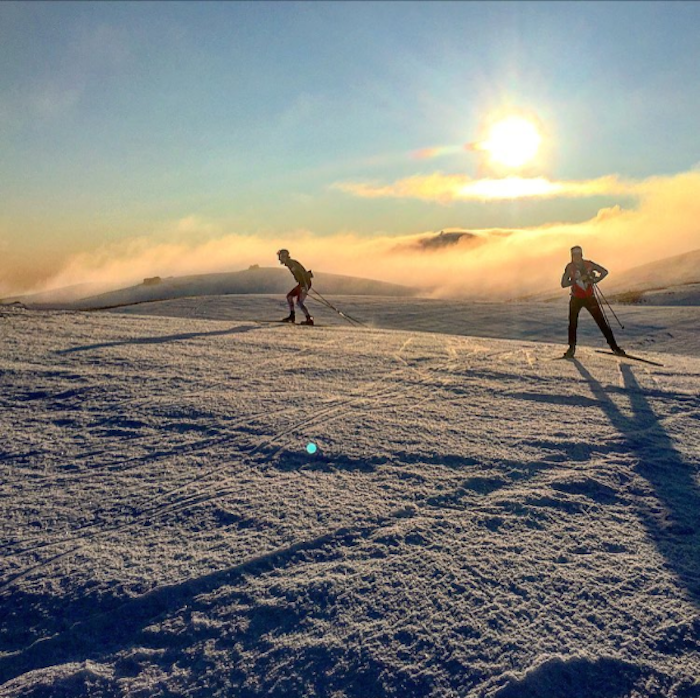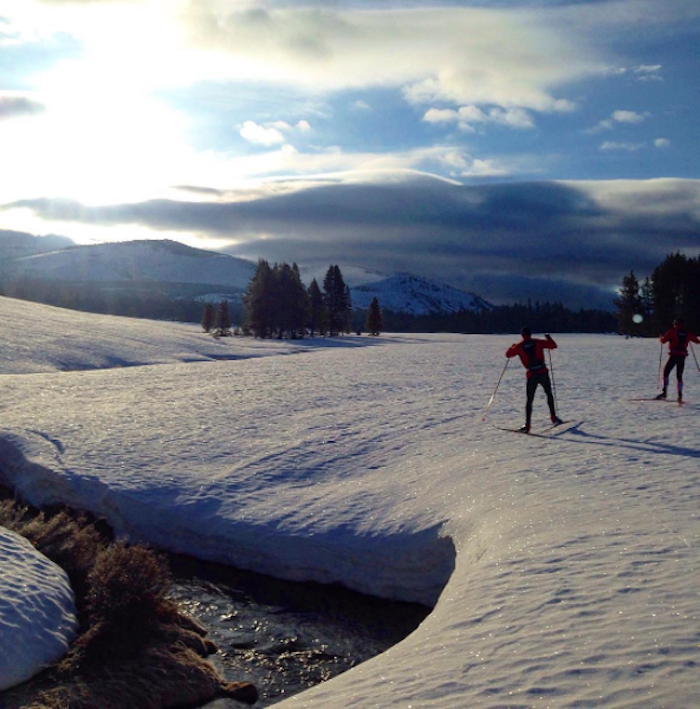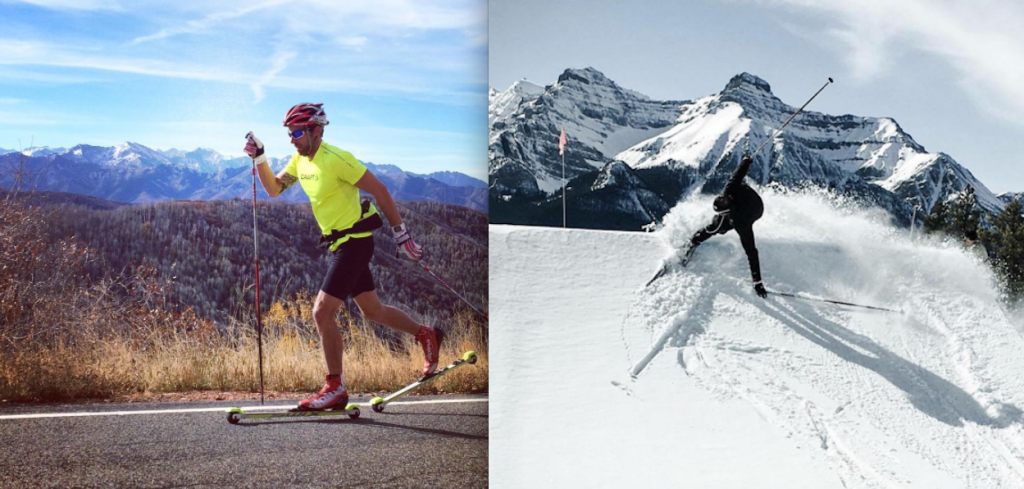Andy Newell is an American skier who has been part of the revitalisation of cross country skiing in the USA. We chatted to him about the cross ski community and why we always see pictures of him in wearing fluro on roller skis.
IP: Where and when were you exposed to skiing?
AN: I started skiing by the age of 3 and was ski racing by 5. In southern Vermont there is a great youth ski league called the Bill Koch league so xc skiing started as a family activity for my parents and brother and sister. We started skiing at Prospect Mountain in Woodford Vermont.
IP: What is it about cross country skiing that stuck?
AN: I love all types of skiing including backcountry and alpine but have only ever raced cross country. I like that xc racing encompasses everything: uphills, downhills, corners, and of course a lot of strength and endurance.
 IP: Was there a specific tipping-point when you realised you wanted to be a full-time skier?
IP: Was there a specific tipping-point when you realised you wanted to be a full-time skier?
AN: I knew I wanted to be a professional athlete by the time I was 15 or 16. At that point I was already training full time for skiing and attending a ski training school in Vermont called the Stratton Mt. School. By the time I was 17 I was traveling over to Europe to race in bigger competitions and it was around that time that I knew I wanted to be a skier and Olympian. XC skiing is one of the most popular winter sports in the world and I never knew that until I started traveling out of the US. To go to Europe and see how big these races were and how they were all televised live and how stoked people were about skiing really energized me.
IP: What does it take to be a full-time skier?
AN: Being a full time skier takes an incredible amount of training in the off season, but in a way we are lucky because we get to do a lot of cross training. Running, biking, swimming, weight lifting, and of course a lot of roller skiing make most of our training days. We put in the majority of our training hours between May and November in order to build the fitness we need for the winter and then spend the winter months traveling and racing about 35 competitions in 14 different countries. So in a way all the travel makes you give up what some people would consider a normal life, but at the same time we get to see some amazing places.
IP: What is the hardest part about being a professional skier?
AN: I think any professional skier takes a risk financially when we commit our life to skiing since the only way to make a decent living is by winning races and putting everything out there.
IP: What does a regular day of training look like?
AN: Day to day training really varies depending on the time of year. Someone like me trains about 800 hours per year in order to prepare for the World Cup. A big week would be in the 30 hour range with 2 workouts a day each day. Some of the longest skis we do are in the 5 hour range doing some of that distance training. During rest periods or periods of high intensity we drop the hours and work on more speed and fast skiing. A typical interval session would be 6 x 4 minutes above aerobic threshold in order to build the Vo2max.
 IP: What has been your proudest moment as a skier?
IP: What has been your proudest moment as a skier?
AN: My proudest moment as a skier is hard to pinpoint. I’ve been on the World Cup podium 3 times but more than any single race result is seeing the US continue to get better and more competitive at xc skiing. When I was named to the US ski team in 2002 we had 4 people on the team and wouldn’t even dream of a top 10 placing in the World. Now we have broken down a lot of doors and the team has grown to be one of the most competitive on the World Cup. I’m proud to have helped that movement.


